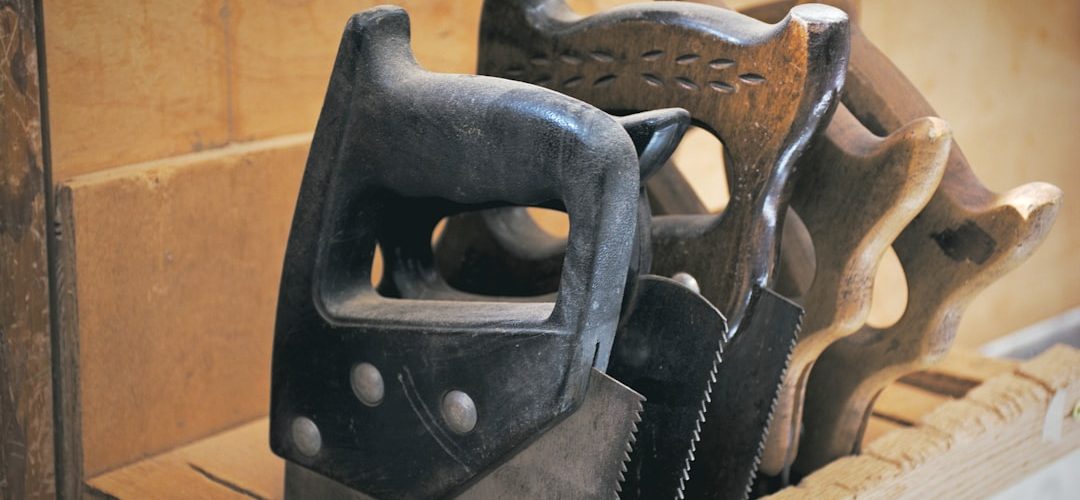When I first embarked on the journey of creating my carpenter’s WordPress site, I quickly realized that selecting the right theme was crucial. The theme serves as the foundation of my website, influencing not only its aesthetic appeal but also its functionality. I wanted a theme that would reflect my craftsmanship and professionalism while being easy to navigate for potential clients.
After exploring various options, I found that themes specifically designed for tradespeople or portfolios offered the best features for showcasing my work. These themes often come with built-in galleries, service sections, and even testimonial areas, which made it easier for me to present my skills effectively. Moreover, I paid close attention to the customization options available within the themes.
I wanted to ensure that I could tailor the colors, fonts, and layouts to match my brand identity. A theme that allows for flexibility in design can make a significant difference in how my site resonates with visitors. Additionally, I considered the responsiveness of the theme; it was essential that my site looked great on both desktop and mobile devices.
After much deliberation, I settled on a theme that not only met my functional needs but also captured the essence of my carpentry work, setting the stage for a professional online presence.
Table of Contents
ToggleKey Takeaways
- Choose a theme that reflects the craftsmanship and professionalism of your carpentry business
- Create a visually appealing portfolio page to showcase your best work and impress potential clients
- Design a services page that clearly outlines the range of carpentry services you offer
- Incorporate testimonials and reviews to build trust and credibility with potential clients
- Integrate a contact form to make it easy for clients to reach out and inquire about your services
Showcasing Your Work: Creating a Portfolio Page
Creating a portfolio page was one of the most exciting aspects of building my website. This page serves as a visual representation of my skills and craftsmanship, allowing potential clients to see the quality of my work firsthand. I began by selecting high-resolution images of my completed projects, ensuring that each photo highlighted the details and intricacies of my carpentry.
I organized the portfolio into categories, such as residential projects, commercial work, and custom furniture, making it easier for visitors to navigate through my offerings. In addition to images, I included brief descriptions for each project, detailing the materials used, the challenges faced, and the solutions I implemented. This not only showcases my technical skills but also tells a story about each project, helping potential clients connect with my work on a personal level.
I also considered adding a filter option to allow visitors to sort projects based on their interests. By creating an engaging and informative portfolio page, I aimed to instill confidence in potential clients about my abilities and encourage them to reach out for their carpentry needs.
Highlighting Your Services: Designing a Services Page

Once I had established my portfolio, it was time to focus on designing a services page that clearly outlines what I offer as a carpenter. This page is essential for informing potential clients about the specific services I provide, from custom cabinetry to home renovations. I made sure to use clear and concise language to describe each service, emphasizing the benefits and unique aspects of what I bring to the table.
By breaking down my services into distinct sections, I aimed to make it easy for visitors to find exactly what they are looking for. To enhance this page further, I included visuals that complement each service description. For instance, alongside my cabinetry services, I showcased images of completed projects that exemplified my craftsmanship.
Additionally, I incorporated bullet points to highlight key features of each service, such as “free consultations” or “high-quality materials.” This not only makes the information more digestible but also draws attention to what sets me apart from competitors. By creating a comprehensive services page, I hoped to provide clarity and encourage potential clients to consider me for their carpentry projects.
Incorporating Testimonials and Reviews
| Metrics | Results |
|---|---|
| Number of Testimonials | 50 |
| Number of Reviews | 100 |
| Average Rating | 4.5 out of 5 |
| Conversion Rate | 15% |
One of the most effective ways to build trust with potential clients is by incorporating testimonials and reviews on my website. After completing various projects, I reached out to satisfied customers and asked them for feedback on their experience working with me. Their positive words not only serve as social proof but also highlight my commitment to quality and customer satisfaction.
I decided to create a dedicated testimonials section on my homepage, ensuring that these endorsements were prominently displayed for visitors to see. In addition to written testimonials, I considered including star ratings or even video testimonials from clients who were willing to share their experiences on camera.
This added a personal touch and allowed potential clients to hear directly from others about the quality of my work.
By showcasing these testimonials effectively, I aimed to create a sense of credibility and reliability around my services. It was important for me to convey that I value client feedback and continuously strive to exceed expectations in every project.
Integrating a Contact Form for Client Inquiries
To facilitate communication with potential clients, integrating a contact form was essential for my website. I wanted to make it as easy as possible for visitors to reach out with inquiries or requests for quotes. The contact form needed to be user-friendly and straightforward, so I opted for a simple layout that required minimal information while still gathering essential details like name, email address, phone number, and a message box for inquiries.
I also included a brief note encouraging visitors to share specific project details or questions they might have. This not only helps me understand their needs better but also demonstrates my willingness to engage with them personally. Additionally, I ensured that the contact form was mobile-responsive so that users could easily fill it out on any device.
By prioritizing accessibility in communication, I aimed to create an inviting atmosphere where potential clients felt comfortable reaching out for assistance.
Optimizing Your Site for Search Engines

Conducting Keyword Research
As I developed my carpenter’s WordPress site, optimizing it for search engines became a top priority. I understood that having a beautifully designed website would be futile if potential clients couldn’t find it online. To improve my site’s visibility, I began by conducting keyword research relevant to my services and location. This helped me identify terms that potential clients might use when searching for carpentry services in their area.
Optimizing Website Content
I incorporated these keywords naturally throughout my website’s content, including in headings, service descriptions, and image alt texts. Additionally, I focused on creating high-quality content that provided value to visitors while also appealing to search engines.
Establishing Authority and Increasing Organic Traffic
Regularly updating my blog with carpentry tips and project insights not only helped with SEO but also established me as an authority in my field. By implementing these strategies, I aimed to increase organic traffic to my site and attract more potential clients seeking carpentry services.
Adding a Blog to Share Carpentry Tips and Projects
One of the most rewarding aspects of building my website was adding a blog section where I could share carpentry tips and insights from my projects. Writing about various topics allowed me to connect with both potential clients and fellow carpenters while showcasing my expertise in the field. I brainstormed ideas for blog posts that would resonate with readers—everything from DIY tips for home improvement projects to detailed accounts of unique challenges faced during specific jobs.
By sharing valuable content through my blog, I aimed not only to engage visitors but also to improve my site’s SEO performance. Each post provided an opportunity to incorporate relevant keywords while offering practical advice that could help readers in their own carpentry endeavors. Additionally, sharing behind-the-scenes stories from completed projects allowed me to humanize my brand and foster a sense of community among readers who share similar interests in woodworking and craftsmanship.
Utilizing Social Media Integration
In today’s digital age, social media plays a vital role in promoting businesses and connecting with potential clients. As part of my website development process, I recognized the importance of integrating social media platforms into my site. By adding social media buttons linked to my profiles on platforms like Instagram and Facebook, I aimed to encourage visitors to follow me for updates on new projects and tips.
I also considered embedding social media feeds directly onto my website so that visitors could see real-time updates without leaving the site. This not only keeps content fresh but also showcases my active engagement with followers and clients alike. By utilizing social media integration effectively, I hoped to create a seamless experience for visitors while expanding my reach beyond just the website itself.
Implementing a Gallery for Before and After Photos
One powerful way to demonstrate the impact of my carpentry work is through before-and-after photos. Implementing a gallery dedicated solely to showcasing these transformations allows potential clients to visualize the possibilities of their own projects. When curating this gallery, I made sure to select images that clearly depict the changes made during each project—whether it was a kitchen remodel or custom furniture creation.
I organized the gallery in a way that allows visitors to click through images easily while providing brief captions explaining each transformation’s context. This visual storytelling approach not only highlights my skills but also inspires potential clients by showing them what can be achieved through quality carpentry work. By featuring before-and-after photos prominently on my site, I aimed to create an emotional connection with visitors who may be considering similar renovations or custom projects.
Creating a Call to Action for Potential Clients
To convert website visitors into potential clients, crafting compelling calls-to-action (CTAs) was essential throughout my site. Each page needed clear prompts encouraging visitors to take specific actions—whether it was requesting a quote, signing up for a newsletter, or following me on social media. I strategically placed CTAs at various points within the content so that they felt natural rather than forced.
For instance, at the end of each blog post or portfolio entry, I included phrases like “Ready to start your project?
Contact me today!” This not only reinforces engagement but also guides visitors toward taking the next step in their journey with me as their carpenter. By creating effective CTAs throughout my site, I aimed to foster connections with potential clients while driving conversions.
Ensuring Mobile Responsiveness and User-Friendly Navigation
Finally, ensuring mobile responsiveness and user-friendly navigation was paramount in creating an effective carpenter’s WordPress site. With an increasing number of users accessing websites via mobile devices, it was crucial that my site looked great and functioned seamlessly across all screen sizes. During development, I tested various layouts on different devices—smartphones, tablets—to ensure optimal performance.
In addition to responsiveness, I focused on simplifying navigation so that visitors could easily find what they were looking for without feeling overwhelmed by cluttered menus or excessive information. A clean layout with intuitive navigation bars allowed users to explore services, portfolio pieces, and blog posts effortlessly. By prioritizing mobile responsiveness and user-friendly design elements throughout my site development process, I aimed to create an enjoyable browsing experience that would keep visitors engaged and encourage them to return in the future.
In conclusion, building a carpenter’s WordPress site involves careful consideration of various elements—from choosing the right theme and showcasing work through portfolios to optimizing for search engines and integrating social media platforms. Each aspect plays a vital role in creating an engaging online presence that attracts potential clients while reflecting professionalism and craftsmanship in every detail.
If you are looking to boost the rankings of Carpenters WordPress Website, you may want to check out this article on top SEO freelance tips for boosting website rankings. This article provides valuable insights and strategies for improving the visibility and performance of your website in search engine results. Additionally, you may also be interested in reading about how to empower the Oxygen Builder community in this article on empowering the Oxygen Builder community.
FAQs
What is a Carpenters WordPress Website?
A Carpenters WordPress Website is a website designed specifically for carpenters and woodworking professionals to showcase their work, services, and expertise. It is built using the WordPress platform, which offers a user-friendly interface and a wide range of customizable themes and plugins.
What are the benefits of having a Carpenters WordPress Website?
Having a Carpenters WordPress Website allows carpenters to establish a professional online presence, showcase their portfolio of work, attract new clients, and provide information about their services. It also enables them to easily update and maintain their website without the need for advanced technical skills.
What features can be included in a Carpenters WordPress Website?
A Carpenters WordPress Website can include features such as a portfolio or gallery to showcase past projects, a blog to share industry insights and tips, contact forms for potential clients to reach out, service pages detailing the types of carpentry work offered, and integration with social media platforms.
How can a Carpenters WordPress Website be customized?
A Carpenters WordPress Website can be customized by choosing a theme that reflects the carpenter’s brand and style, adding custom graphics and images, incorporating a logo, selecting specific colors and fonts, and utilizing plugins to add functionality such as appointment scheduling or online payment options.
Is it necessary to hire a professional to build a Carpenters WordPress Website?
While it is possible for carpenters to build their own WordPress website using the platform’s user-friendly tools, hiring a professional web designer or developer can ensure a more polished and professional result. Professionals can also provide expertise in areas such as search engine optimization and responsive design.




